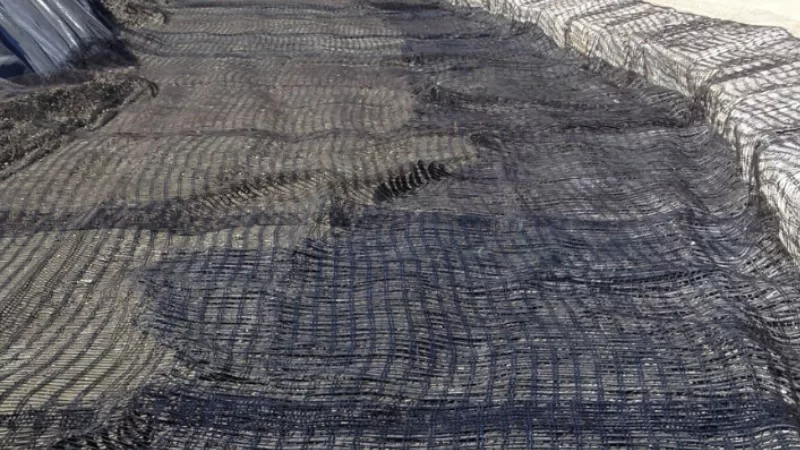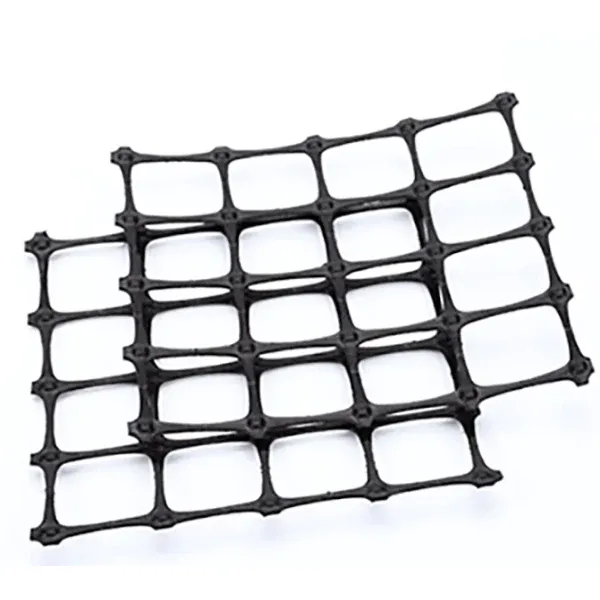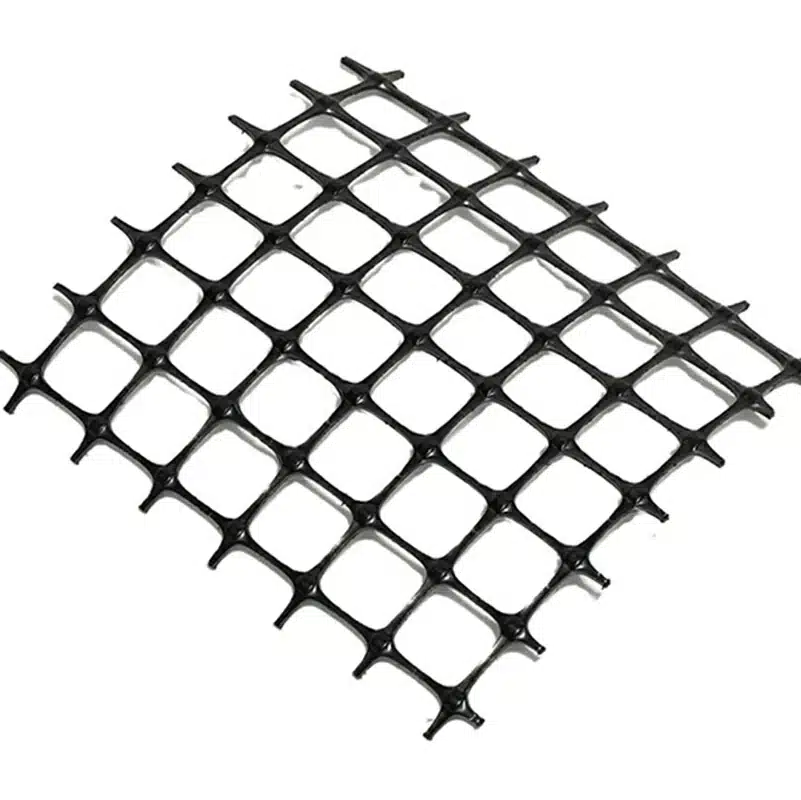+86-159 9860 6917
info@geofantex.com
geofantex@gmail.com
+86-400-8266163-44899
In the realm of landscaping and civil engineering, integrating aesthetics with functionality presents a unique challenge, especially when it involves stabilizing steep slopes or creating attractive yet durable retaining walls. This is where the innovative use of geogrids with boulders comes into play. Combining the natural elegance of boulders with the structural support of geogrids not only enhances the visual appeal of outdoor spaces but also ensures their longevity and safety. This article explores the practical aspects of using geogrids with boulders, delving into common questions that arise when considering this method for landscape enhancement and erosion control.
What Are Geogrids and How Do They Work with Boulders?
Geogrids are a type of geosynthetic material used in construction to reinforce soil and other materials. They are typically made from polymers like polyethylene or polypropylene and are characterized by their grid-like structure. This structure allows geogrids to provide tensile strength to soil, making them ideal for use in various civil engineering projects, including retaining walls, road construction, and slope stabilization. When used with boulders, geogrids enhance stability and prevent soil erosion, making them a crucial component in many landscaping and infrastructure projects.
- What is the Purpose of Geogrids in Boulder Placement: Geogrids serve as a reinforcement mechanism when placing boulders, especially in environments prone to erosion or instability. By distributing the load of the boulders across a larger area, geogrids prevent the boulders from sinking or shifting over time. This ensures that the boulders remain securely in place, even under heavy loads or adverse weather conditions.
- How Are Geogrids Installed with Boulders: Geogrids serve as a reinforcement mechanism when placing boulders, especially in environments prone to erosion or instability. By distributing the load of the boulders across a larger area, geogrids prevent the boulders from sinking or shifting over time. This ensures that the boulders remain securely in place, even under heavy loads or adverse weather conditions.
- What Are the Benefits of Using Geogrids with Boulders: Geogrids serve as a reinforcement mechanism when placing boulders, especially in environments prone to erosion or instability. By distributing the load of the boulders across a larger area, geogrids prevent the boulders from sinking or shifting over time. This ensures that the boulders remain securely in place, even under heavy loads or adverse weather conditions.
- In What Types of Projects Are Geogrids and Boulders Commonly Used Together: Geogrids and boulders are commonly used together in a variety of construction and landscaping projects. These include the creation of retaining walls, embankments, and slope stabilization systems. They are also used in the construction of roads and highways, where boulders may be employed as part of the foundation or drainage systems. The combination of geogrids and boulders is especially useful in areas prone to heavy rainfall or flooding, where erosion control is critical.
Geogrids are essential tools in modern construction, providing reinforcement and stability to soil and other materials. When used with boulders, they prevent shifting and erosion, ensuring the longevity and safety of various structures. Whether in large-scale infrastructure projects or small landscaping endeavors, the combination of geogrids and boulders offers a reliable solution for soil reinforcement and erosion control.

What Are the Benefits of Using Geogrids with Boulders?
Geogrids are commonly used in construction projects that involve the placement of boulders for various purposes such as retaining walls, embankments, and slopes. Their use enhances the stability and durability of the structure. Below are the key benefits of using geogrids with boulders:
- Increased Structural Stability: Geogrids provide reinforcement by interlocking with boulders and distributing loads evenly across the surface. This prevents the movement or shifting of boulders, enhancing the overall stability of the structure, whether it’s a retaining wall or slope protection.
- Erosion Control: When placed beneath boulders, geogrids act as a stabilizing layer, reducing the risk of soil erosion. They prevent the soil from washing away while allowing water to pass through, which is crucial for slope stability and embankments.
- Cost Efficiency: The use of geogrids can reduce the amount of excavation and material needed for boulder placement. This not only lowers material costs but also shortens the time required for installation. Geogrids make it possible to use fewer or smaller boulders while maintaining structural integrity.
- Longer Lifespan of Structures: By providing reinforcement and preventing soil movement, geogrids prolong the life of structures made with boulders. This reduces the need for maintenance or repairs, which can be costly over time.
- Improved Load-Bearing Capacity: Geogrids significantly increase the load-bearing capacity of the soil beneath the boulders. This is particularly important in areas where heavy loads or traffic are expected, ensuring that the boulders do not sink or shift under pressure.
Using geogrids with boulders provides numerous benefits, including increased stability, erosion control, cost savings, and improved load-bearing capacity. They help create durable, long-lasting structures that require less maintenance, making them a valuable addition to any construction project involving boulders.
What Types of Projects Are Best Suited for This Method?
Using geogrids with boulders is ideal for a variety of projects, including:
- Retaining walls: These are especially useful for supporting steep slopes and preventing soil erosion.
- Landscaping Features: These include raised beds, garden pathways, and decorative elements that require both aesthetic appeal and structural integrity.
- Erosion Control: On riverbanks, coastlines, or any area prone to erosion, where the combination can provide effective stabilization.
- Infrastructure Projects: Including roadways and embankments where stability and drainage are critical.
How is the installation process for Geogrids with Boulders?
The installation process involves several key steps:
- Site Preparation: Clearing the area and laying a foundation of compacted soil or gravel.
- Laying Geogrid Layers: Rolling out geogrid sheets at specified intervals, tailored to the project’s structural requirements.
- Placing Boulders: Strategically placing boulders along the geogrid, ensuring they are securely interlocked and supported.
- Backfilling: Filling gaps with soil or gravel to promote drainage and further stabilize the structure.
The combination of geogrids with boulders represents a revolutionary approach in landscaping and civil engineering, marrying the beauty of natural stone with the reliability of modern materials. This method not only enhances the aesthetic appeal of outdoor spaces but also ensures their durability and stability against the forces of nature. Whether for residential gardens or large-scale infrastructure projects, the use of geogrids with boulders offers an efficient, cost-effective, and visually pleasing solution to a myriad of structural and environmental challenges.



Get Free Sample
We’ll respond as soon as possible(within 12 hours)






















